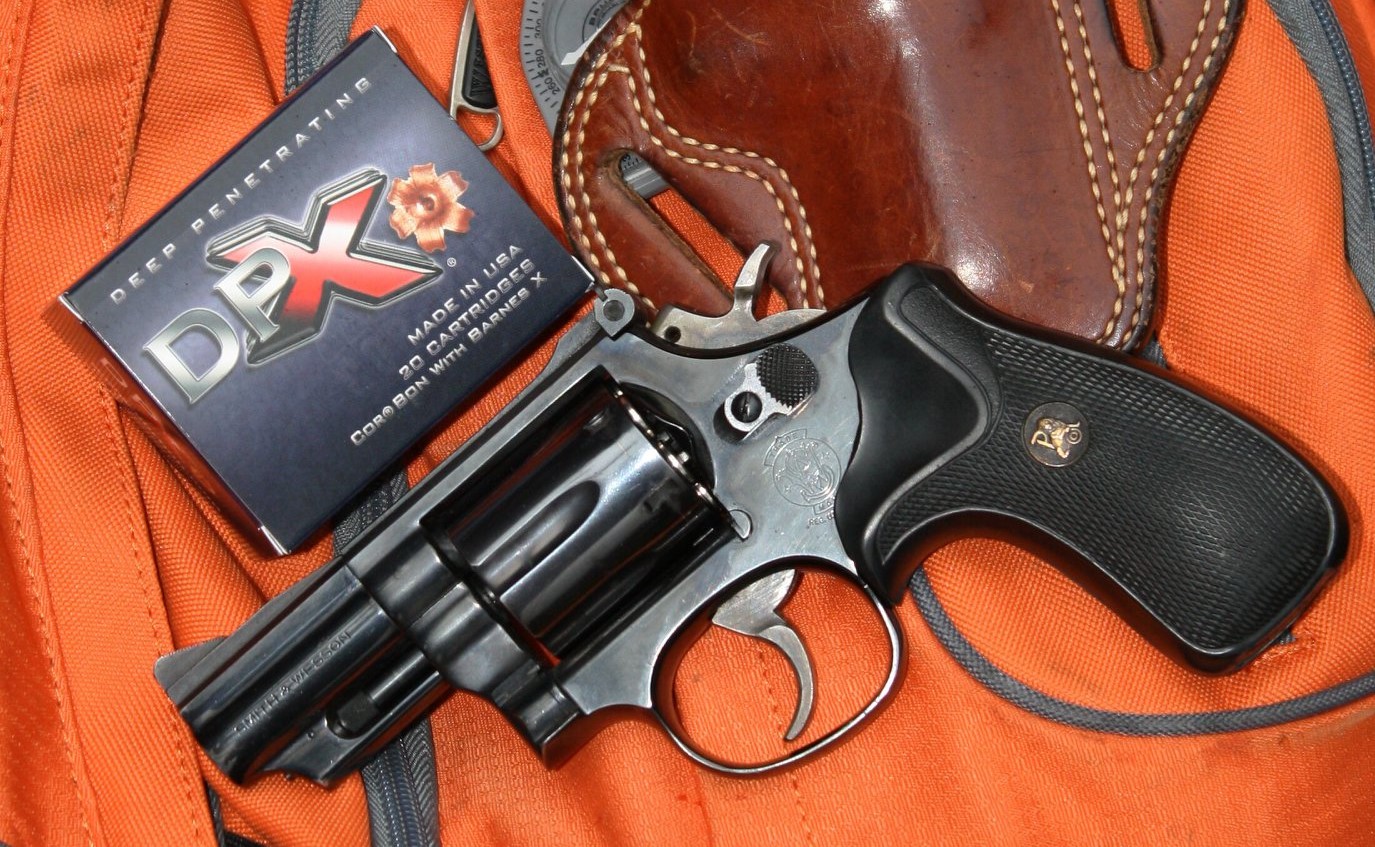
By Dave Workman
Editor-in-Chief
It is one of the most recognizable revolvers on the North American landscape, a sidearm seen in films and television dramas, a fast and accurate sixgun capable of launching full-house .357 Magnum projectiles when nothing else will do, and it deserves being called a “classic.”
It is the Model 19 Smith & Wesson “Combat Magnum” with a 2 ½-inch barrel, first manufactured in a limited run in 1963 and brought into full production as one Model 19 option in 1966, according to Wikipedia.
A long-retired game cop pal of mine used one to bring down a badly-injured cow elk many years ago, by his own account.
Retired Texas Sheriff-turned-gunwriter Jim Wilson sometimes posts an image of two Model 19 snub-guns on Facebook, causing me to drool with envy uncontrollably.

One of the more widely seen images of myself on the trail—looking somewhat fatigued—features my own Model 19 holstered in a classic Bianchi “Shadow” pancake-style rig next to a belt slide cartridge carrier with six handloads in the loops.
My personal gun was purchased from the old John Jovino gun shop in New York City via an advertisement in, if I recall correctly, the old Shotgun News decades ago while I worked at the now long-gone Fishing & Hunting News. When it arrived, owner/publisher Bill Farden took it to his office for safe-keeping while I was out of the building, and upon my return, he remarked about how it caught his immediate attention for practicality.
I filled out the paperwork and, because I was (and still am) licensed to carry, the little blaster went home with me later that afternoon for a bath in Hoppe’s No. 9 and a trek to the range where it immediately demonstrated its ability to digest full magnum loads, both factory fodder and handloads. At the time, I was almost exclusively loading 125-grain Speer JHPs ahead of a healthy dose of Hercules (Now Alliant) 2400 over a CCI magnum small pistol primer.
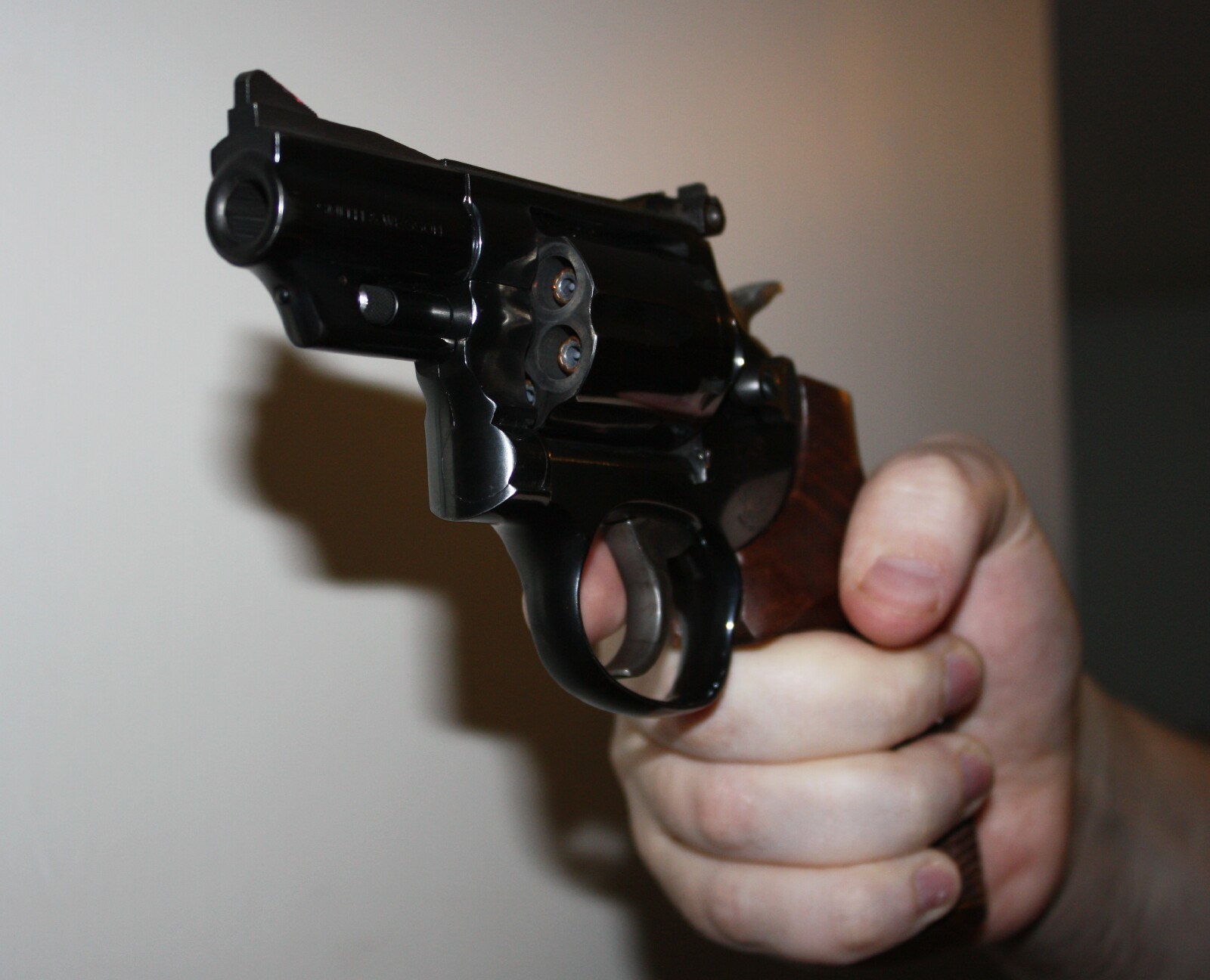
One of my first moves was to replace the small factory grips on the round butt with a Pachmayr wraparound made from recoil-absorbing rubber, one of the smartest handgun modifications I ever performed. I’ve lost count of the number of rounds which have been fired through this handgun in .357 Magnum and .38 Special (standard and +P), but I do know the majority of a shipment of 500 Nosler 125-grainers went through it, propelled by either 2400 or H110, and nowadays for the trail, I use either a Nosler 158-grain or 125-grain JHPs from Sierra or Hornady, depending upon what I can round up at a gun shop or gun show.
(Note: I always stock up when bullets are in good supply, which is how I’ve managed to escape the panics over the past few years when hoarders would buy up all the available components, or all the factory ammunition they could find. I’ve never been without ammunition. Consider this a suggestion from one shooter to another. Ditto with powder and primers.)
In addition to the Bianchi belt rig, my Model 19 snubby has ridden frequently in an old upside down Safariland shoulder holster, or in a DeSantis belt rig, and in my personally-built high ride hip/belt holster for outdoor use. In the shoulder rig, the S&W has disappeared under a sport jacket, down vest, pull-over sweatshirt or just a loose heavy shirt on more occasions than I can recall, in all sorts of social settings including major league baseball games, receptions, family events and various meetings.
Years ago, I complimented my snub gun with a pair of HKS speedloaders, carried in a double pouch. The combination has worked ever since.
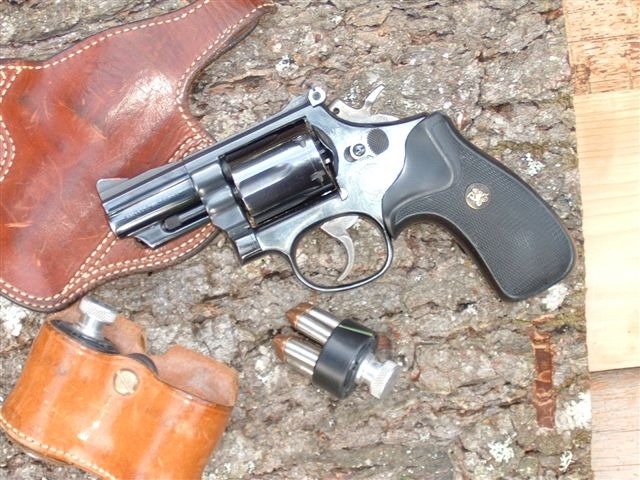
‘Sexy’ Handgun?
Does the 2.5-inch Model 19 qualify as “sexy?” Oh, yeah, depending upon to whom one listens. As noted earlier, this revolver has had plenty of screen time over the years. The stainless version, dubbed the Model 66, was seen in the popular Simon & Simon detective program, carried by co-star Jameson Parker.
We’ve seen blued models on the big and small screens, used by good guys and bad guys.
The full shroud over the short cylinder pin and the presence of an adjustable rear sight—don’t sell it short, because even on a 2.5-inch snubby, it still serves a critical purpose, especially for longer-range shooting and for close-up consistent accuracy, in my experience—and the slightly wider hammer and trigger make this an eye-appealing package.
But aside from being photogenic, the Model 19 snubby is a seriously good shooter with every cartridge I’ve ever loaded into its chambers. The aforementioned 125-grain JHP has always been a very good bullet for the .357 Magnum, with loads that might clock up to the 1,600-1,700 fps level (muzzle velocity suffers out of a short barrel), and with +P .38 Specials, it is a genuinely comfortable revolver to shoot.
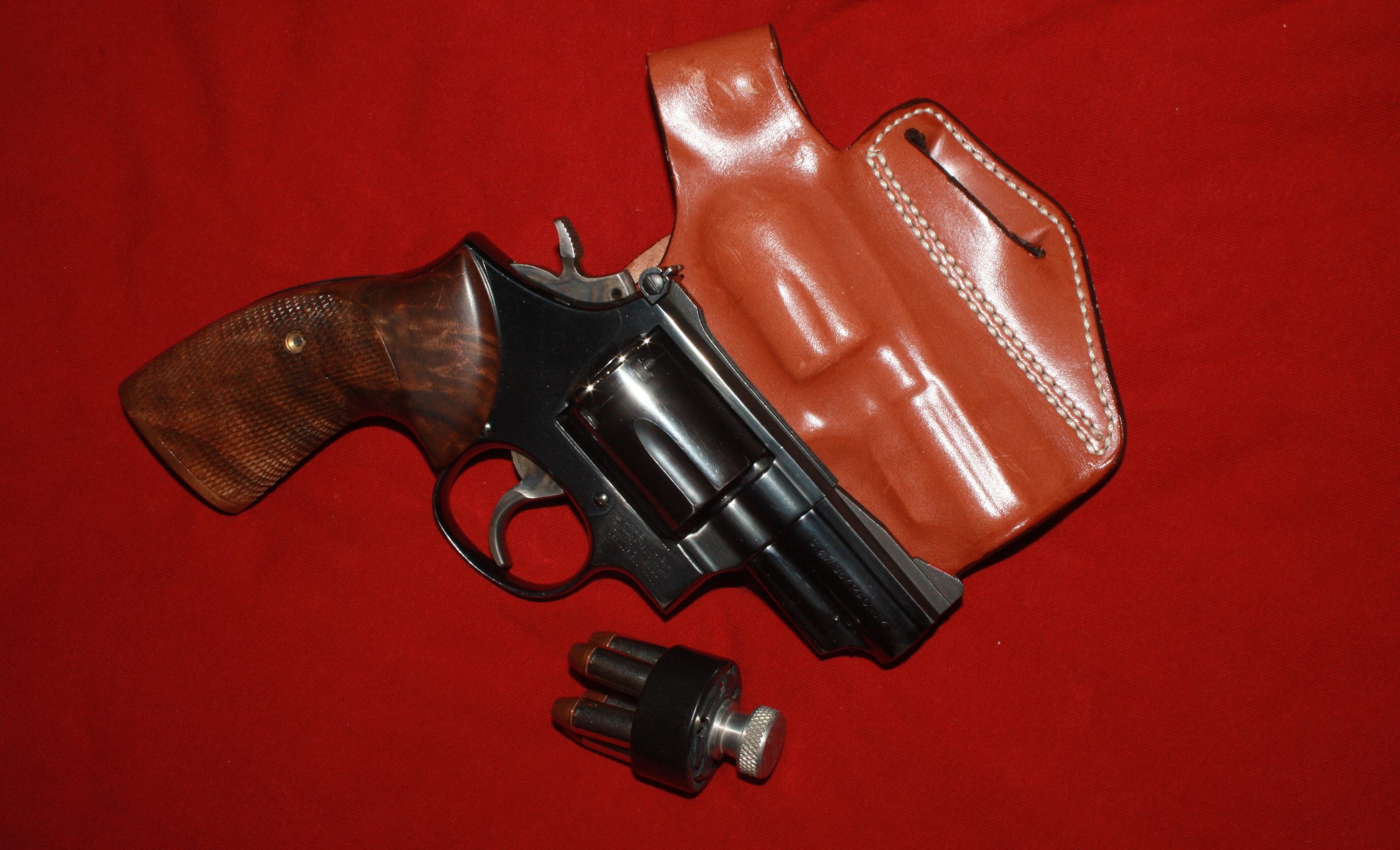
A few years ago, I swapped the Pachmayr rubber grip for a set of Herrett’s stocks in the “Detective” pattern, and they fit my hand well. Still, in the winter months, I might just remount the Pachmayrs due to the moisture factor.
One thing I’ve noticed is that a lot of today’s younger shooters are not really “into” revolvers. If that makes me an anachronism, so be it. Sixguns have stopped a lot of bad behavior over the years, and back when wheelguns were still the norm for law enforcement sidearms, the Model 19 was a universal favorite, along with the Colt Trooper, because they both handle the .357 Magnum, and both carry about the same in a 4-inch barrel configuration.
The Model 19 was developed with considerable input from Bill Jordan, the old Border Patrol legend, who I knew slightly, and who was certainly one of the fastest men with a gun I ever personally saw. It was introduced in 1957, and was one of the dominant double-action revolver models for decades.
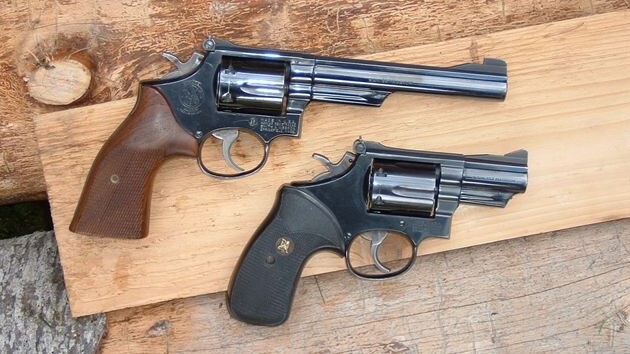
In addition to the snub gun, there is also a 6-inch version in my gun safe, and it has seen quite a bit of use in the Northwest outdoors. It’s also the revolver with which I used to compete regularly at local matches.
The cartridge, of course, has been around since about 1935, and it has proven itself repeatedly against man and beast in all sorts of environments.
There may be bigger guns, and a few smaller guns, which people like, but the 2 ½-inch Model 19 is a classic in every sense. One might even consider it a legend in its own time.



